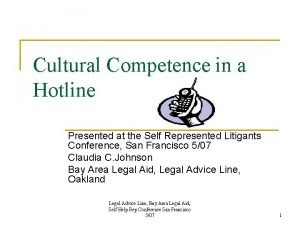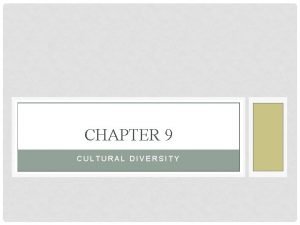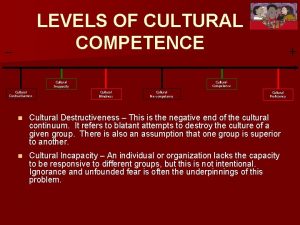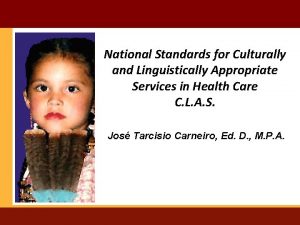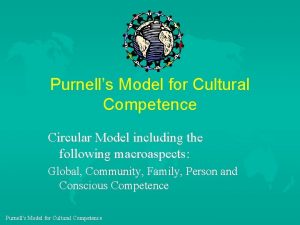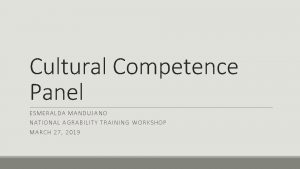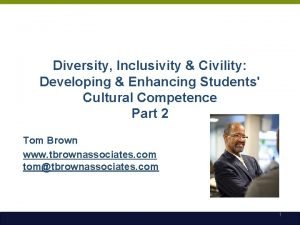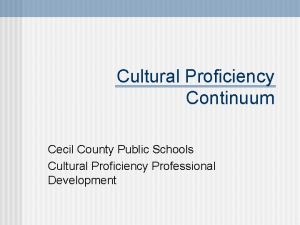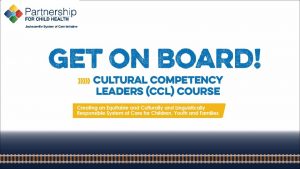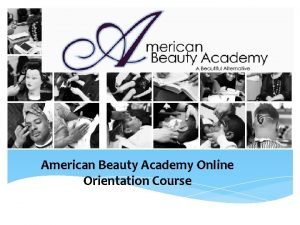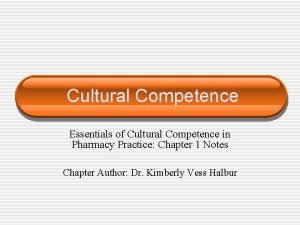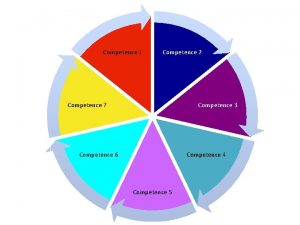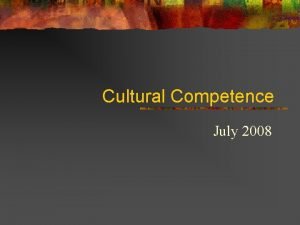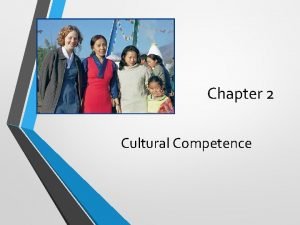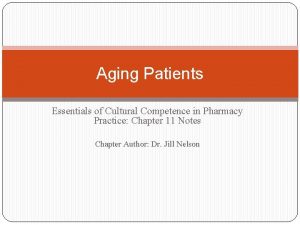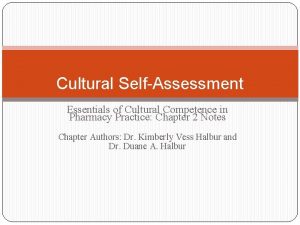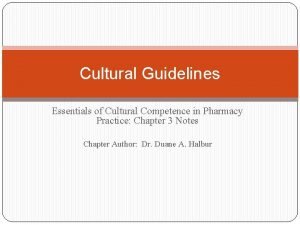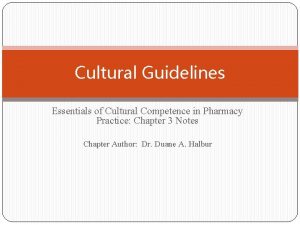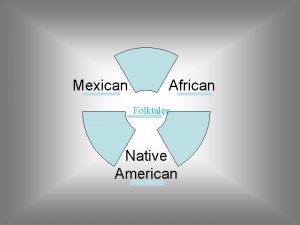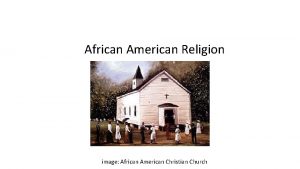African American Patients Essentials of Cultural Competence in


















- Slides: 18

African American Patients Essentials of Cultural Competence in Pharmacy Practice: Chapter 5 Notes Chapter Author: Dr. Kristina A. Peterson

Learning Objectives 1. 2. 3. 4. Articulate the discrimination and environmental racism faced by African Americans Recognize the health disparities and socioeconomic barriers that may impact African American patients Specify the health care disparities that may affect African American patients Identify strategies for working with extended and fictive family members that may be present in the procurement of pharmacy care

Introduction Census figures History of African Americans in the United States. Jim Crow laws in the South, racial segregation, and discrimination. The Civil Rights Movement. The legacy of slavery and racism.

Language Until the mid 1960’s the terms Negro or Colored were widely used to describe African Americans. Those terms are now considered derogatory. Some also criticize the term African American, preferring to refer to themselves as “Black” or “a person of color. ” Black or African American citizens are classified as a person having origins in any of the black racial groups of Africa.

Communication Styles Generally, more dramatic and expressive in their speech and language patterns than are members of the dominant culture. Communication also tends to be more people oriented than topic or object oriented. More outwardly affectionate as well as more direct and assertive during argumentation. Some may engage in the use of African American vernacular English or what is commonly known as Ebonics. Cultural inversion Ways of dressing, speaking, and acting that unify them as a collective while they subtly oppose dominant culture expectations of them.

Family Roles/Organization High value is placed on familial relationships and tends to include extended family. Elders may play a key role in family and community systems. Fictive kinship relationships are also common and involve people who are called family even when no biological relationship exists. Increase in the number of births to unmarried women. A significant increase in the number of female-headed households, which are associated with high rates of poverty and economic instability. More than 50% of black children live in households with only one parent – mostly their mother. Nearly 44% of African American preschoolers live in households with less than $10, 000 annual income.

Legal Concerns Legal issues involving African American men are a possible contributing factor to the increase in femaleheaded African American families. 1995 study by the Sentencing Project on drug-related crimes These disparities could be related to racism and discrimination or to classism and higher rates of poverty among African Americans. African American children in foster care

Socioeconomic Issues Annual median income for African American households Childhood poverty Exposure of African American children to violence

Workforce Issues The unemployment rate for African Americans nationwide The median weekly wage Jobs held by African Americans High value on education as a way to achieve personal and family goals. High school and college graduation rates

Healthcare Practices Nearly one third of African Americans do not have a regular doctor. Many use the hospital emergency room as their primary health care provider and only seek services when they are sick or hurt. Close to 1. 8 million African American children in the United States do not have health insurance.

Health Disparities Infant mortality AIDS Kidney disease, septicemia, diabetes, stroke and heart disease Hypertension

Infant Mortality African American infant mortality rates compared with that of the dominant culture. Black infant deaths in first year of life compared with white infants Contributing factors of infant mortality.

AIDS is five times as deadly for young African Americans age 25 -44 as for their dominant culture counterparts. Proportion of new HIV infections in the United States that are in African Americans AIDS rate in black women compared with white women.

Other Health Disparities High death rates from kidney disease, septicemia, and diabetes, stroke and heart disease, asthma, and prostate cancer. Hypertension in African Americans. Overweight

Nutrition Half of all black neighborhoods lack access to a full-service grocery store or supermarket. 32 percent increase in the consumption of fresh fruits and vegetables when there is a supermarket located in a community. 50 percent of African American adults do not exercise on a regular basis. Although some of the poor health statistics have been attributed to lifestyle – higher incidence of intravenous drug use, smoking, and obesity – there is another culprit in the inequities of medical treatment.

Environmental Racism The lack of adequate medical care for poor and lower middle class African Americans greatly increases the number of deaths by disease. Effect of environmental racism on the health of African Americans. 71 percent of African American families live in counties that violate federal air pollution standards.

Folk Medicine & Home Remedies Many African American people will attempt to alleviate medical conditions with home remedies or folk medicine. An important factor to consider in practicing pharmacy. Pharmacists should ask patients about any remedies they may be trying at home.

Reflection Questions 1. How would you address environmental racism if it were to occur in a pharmacy practice setting? 2. As a pharmacist, how will you work with African American patients to mitigate known health disparities and socioeconomic barriers? 3. How will you utilize the information contained in this chapter to inform your practice?
 Budaya organisasi adalah
Budaya organisasi adalah Cultural competence
Cultural competence Chapter 9 cultural diversity
Chapter 9 cultural diversity Threatens red
Threatens red What is cultural destructiveness
What is cultural destructiveness Naeyc pathways to cultural competence checklist
Naeyc pathways to cultural competence checklist Cultural competence on resume
Cultural competence on resume National centre for cultural competence
National centre for cultural competence Nea cultural competence
Nea cultural competence Staircase of cultural competence
Staircase of cultural competence Cultural competence
Cultural competence Purnell's model for cultural competence
Purnell's model for cultural competence Cultural competence
Cultural competence Four skills of cultural diversity competence
Four skills of cultural diversity competence Understanding civility and cultural competence
Understanding civility and cultural competence Cultural incapacity
Cultural incapacity Terry cross cultural competence
Terry cross cultural competence Oxford african american studies center
Oxford african american studies center American beauty online
American beauty online

